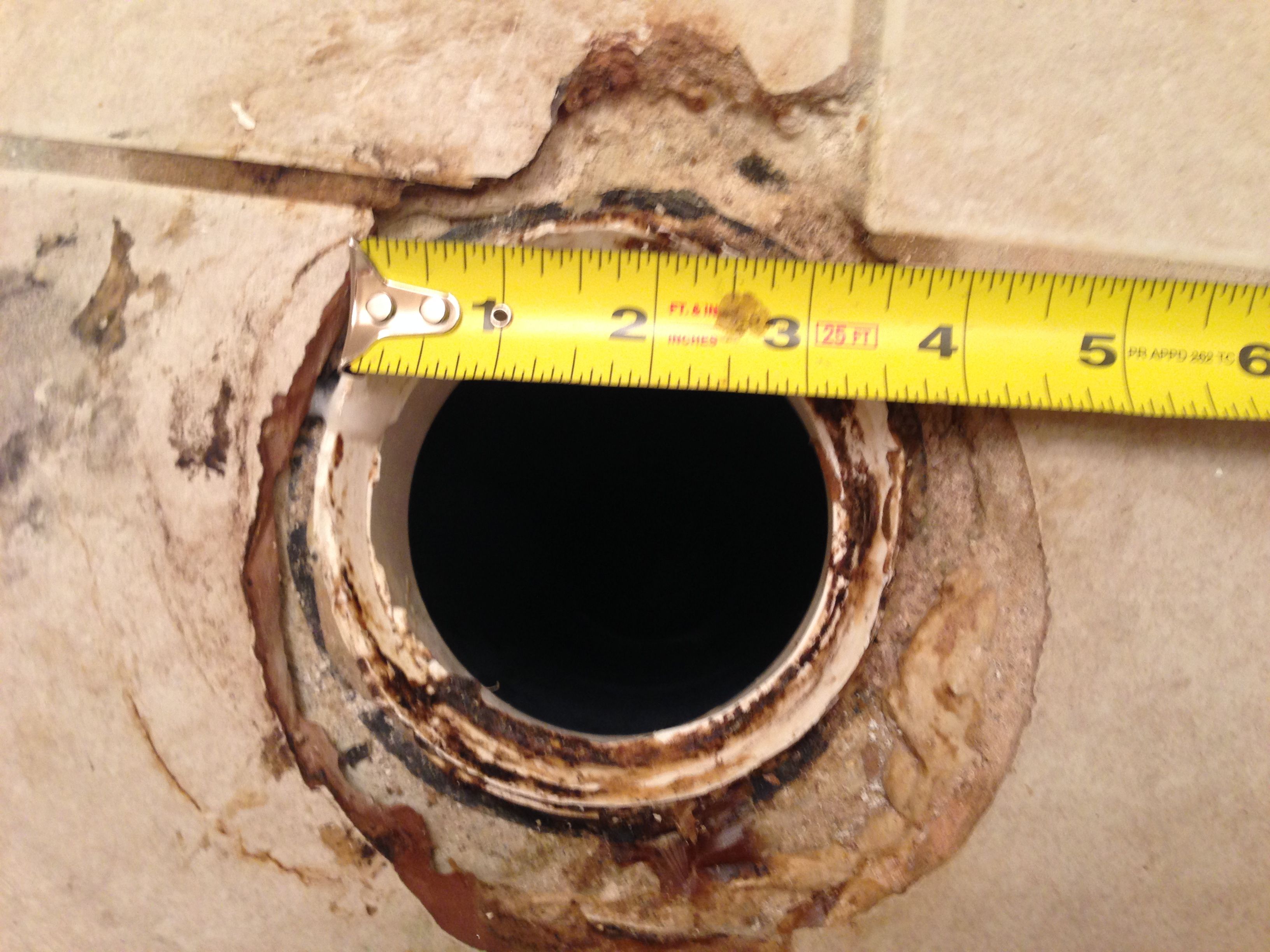thelovelydove
Member
My husband and I had to remove the toilet in the basement bathroom to get to the wall behind it. What did we discover in that process? The toilet doesn't have a flange. More precisely, it looks like the flange was broken off in the toilet pipe. The people who flipped our house clearly decided not to deal with it, tiled around it, then simply attached the toilet with a wax seal and some caulk. See the pictures below.
What do we do now!? We don't want to slip a smaller flange into the existing one, because we think it would be too small and cause toilet backups. We thought we might be able to cut the existing flange out with a Dremel, but we are terrified of cutting too far into the pipe. Then, there's the unevenness of the tile around the pipe. In order to seat the flange properly, do we need to cut away some of that tile, and if so, how? In the meantime, we are starting to get hammering in our pipes throughout the whole house. (If it's not one thing, it's another.) We are pretty sure air is getting into the pipes from that uncovered toilet pipe (you can feel a negative pressure pulling air into the pipe).
We are inexperienced, but eager DIYers, but plumbing and electricity are the two areas where we are terrified of the consequences of getting it wrong. Is this something we could reasonably tackle ourselves (carefully cut out the broken flange with a Dremel)? Should we consult a professional handyman? Or do we need a plumber?
Also, can this wait a week until after Thanksgiving, or is there a real risk of sewer gas coming up into the house through the open drain pipe? Is the house-wide hammering going to get worse until we resolve the toilet and get all pipes reconnected?
Thanks in advance, and let's keep things in perspective and be thankful for what truly matters as we head into Thanksgiving!


What do we do now!? We don't want to slip a smaller flange into the existing one, because we think it would be too small and cause toilet backups. We thought we might be able to cut the existing flange out with a Dremel, but we are terrified of cutting too far into the pipe. Then, there's the unevenness of the tile around the pipe. In order to seat the flange properly, do we need to cut away some of that tile, and if so, how? In the meantime, we are starting to get hammering in our pipes throughout the whole house. (If it's not one thing, it's another.) We are pretty sure air is getting into the pipes from that uncovered toilet pipe (you can feel a negative pressure pulling air into the pipe).
We are inexperienced, but eager DIYers, but plumbing and electricity are the two areas where we are terrified of the consequences of getting it wrong. Is this something we could reasonably tackle ourselves (carefully cut out the broken flange with a Dremel)? Should we consult a professional handyman? Or do we need a plumber?
Also, can this wait a week until after Thanksgiving, or is there a real risk of sewer gas coming up into the house through the open drain pipe? Is the house-wide hammering going to get worse until we resolve the toilet and get all pipes reconnected?
Thanks in advance, and let's keep things in perspective and be thankful for what truly matters as we head into Thanksgiving!


























































